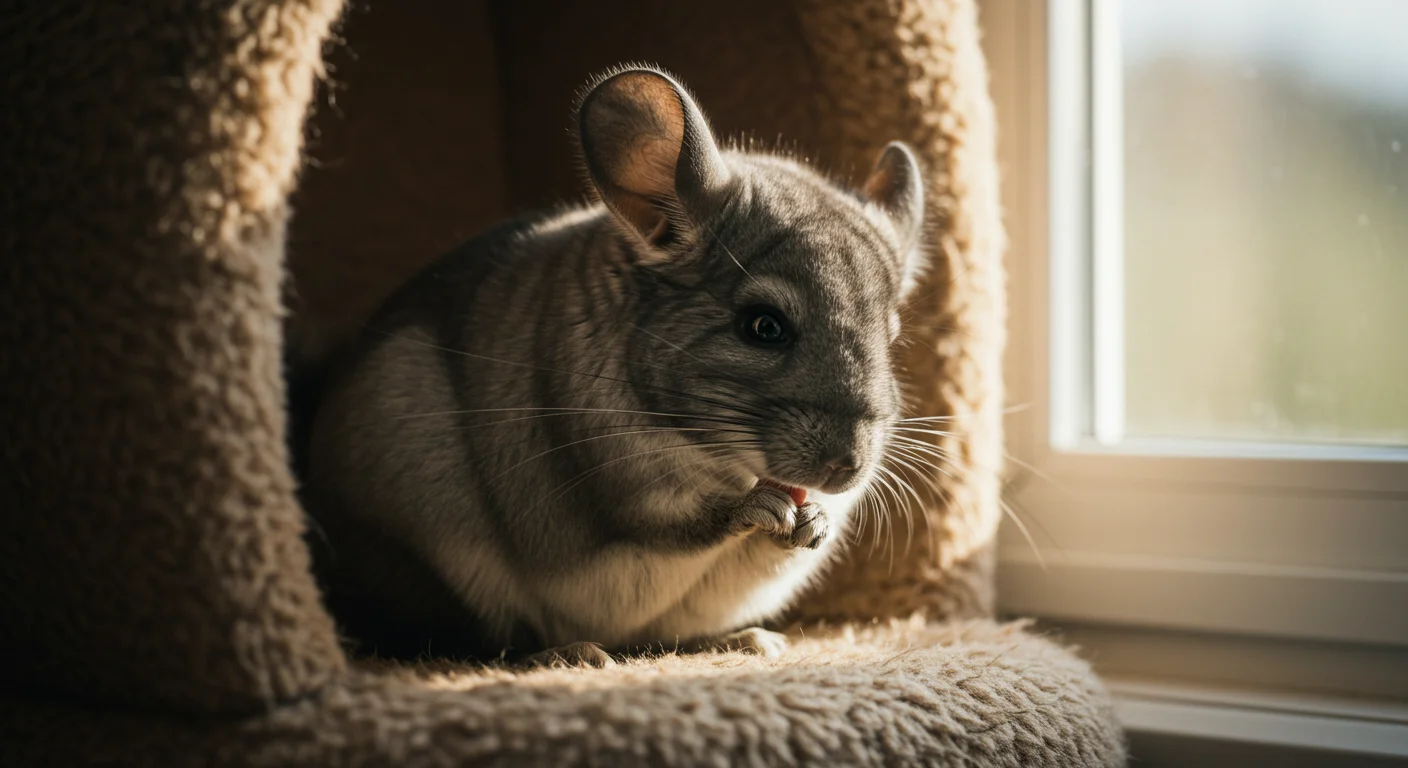Can You Train a Chinchilla? Teaching Tricks
Chinchillas are intelligent, curious animals, which often leads owners to wonder if they can be trained like a dog or cat. While you probably won’t be teaching your chinchilla to fetch your slippers, they are capable of learning certain behaviors and associating actions with rewards. Training can be a fun way to interact and bond, but it requires understanding their motivations, limitations, and using appropriate techniques.
Chinchilla Intelligence and Trainability
Chinchillas are smart in ways that benefit their survival as prey animals – they quickly learn layouts, recognize routines, identify safe vs. unsafe situations, and remember individuals. Their trainability stems more from this intelligence and their natural curiosity rather than an innate desire to please humans like dogs often have.
Their primary motivators are typically:
- Food/Treats: Tiny amounts of high-value, safe treats are powerful.
- Curiosity: Exploring new things can be rewarding.
- Safety/Comfort: Learning actions that lead to feeling secure (like entering a carrier willingly).
Training success relies heavily on patience, consistency, and positive reinforcement.
What Can Realistically Be Trained?
Forget complex agility courses. Focus on simple, practical behaviors or basic “tricks”:
1. Litter Box Training (Partial Success)
Chinchillas tend to urinate in one or a few chosen corners. You can encourage this:
- Place a shallow, safe litter pan (ceramic, metal, or glass – avoid plastic) in their preferred corner(s).
- Use a different, safe substrate in the pan (e.g., kiln-dried pine pellets, aspen shavings if rest of cage is fleece) than the main cage floor.
- Move any soiled bedding into the pan initially.
- Praise or offer a tiny treat *immediately* if you see them use the pan.
Note: While many chins can be trained to urinate in a box, they will likely still poop everywhere – this is normal and difficult/impossible to train against. Aiming for consistent chinchilla urination spot training is a realistic goal.
2. Coming When Called (Sometimes)
- Use a specific sound or word consistently (e.g., their name, a clicking sound).
- Offer a tiny, high-value treat immediately when they approach after hearing the cue.
- Start in a small space (like during playtime) where they are already close.
- Keep sessions short and positive.
Success varies greatly depending on the individual chin’s personality and mood.

3. Accepting Handling/Entering Carrier
This uses positive association:
- Make handling sessions short, gentle, and rewarding (a tiny treat afterwards).
- Leave the travel carrier open during playtime with treats or hay inside, allowing them to explore it willingly.
- Reward any voluntary entry into the carrier.
This is less “training” and more “conditioning” to reduce stress.
4. Basic “Tricks” (Targeting, Standing Up)
- Targeting: Teach them to touch their nose to a target stick (like a chopstick). Hold the stick out, say a cue (“touch”), and reward immediately when they sniff or touch it. Gradually move the stick further away or to different locations.
- Standing Up (“Begging”): Hold a treat just above their head, say a cue (“up”), and reward when they stand on their hind legs to reach it.
These rely heavily on luring with treats.
Training Techniques: Positive Reinforcement
The only ethical and effective way to train a chinchilla is through positive reinforcement:
- Reward Desired Behavior: Immediately reward the action you want with something the chinchilla values (usually a tiny piece of a safe treat like a plain Cheerio, oat groat, or rosehip). Timing is critical – the reward must come within a second or two of the action.
- Keep Sessions Short: Chinchillas have short attention spans. Keep training sessions to just a few minutes (e.g., 5 minutes max) once or twice a day.
- Be Patient: Learning takes time. Don’t get discouraged if progress is slow.
- End on a Positive Note: Always try to end the session successfully, even if it’s with a very simple action they already know.
- Never Punish: Punishment (shouting, scolding, physical correction) is ineffective and harmful. It will only make the chinchilla fearful, stressed, and damage your bond. Stick to rewarding good attempts. Using positive reinforcement for chinchilla behavior is the only recommended approach.
Treats must be tiny and infrequent to avoid upsetting their sensitive digestion. Use shreddings of shredded wheat, single oat groats, or tiny pieces of dried herbs/rosehips. Training should not significantly increase their overall treat intake.
Patience and Consistency are Key
Progress may be slow and inconsistent. Some days your chinchilla might be receptive, other days completely disinterested. Consistency in cues, rewards, and short, frequent sessions yields the best results over time.

What Not to Expect
- Complex sequences of behaviors.
- Reliable performance every time.
- Training that goes against their natural instincts (e.g., stopping pooping everywhere).
- Training motivated by pleasing you – it’s usually about the treat!
Benefits of Training Attempts
Even if you don’t achieve perfect “tricks,” the process itself offers benefits:
- Bonding: Spending positive, interactive time together.
- Mental Stimulation: Challenges their mind and prevents boredom.
- Reduced Stress (if done right): Positive conditioning can make necessary actions (like entering a carrier) less stressful.
So yes, you can train a chinchilla to perform simple actions using patience and positive reinforcement. Focus on practical behaviors or fun, simple tricks, keep sessions short and rewarding, and enjoy the process of interacting with your intelligent little companion, respecting their natural inclinations and limitations.








